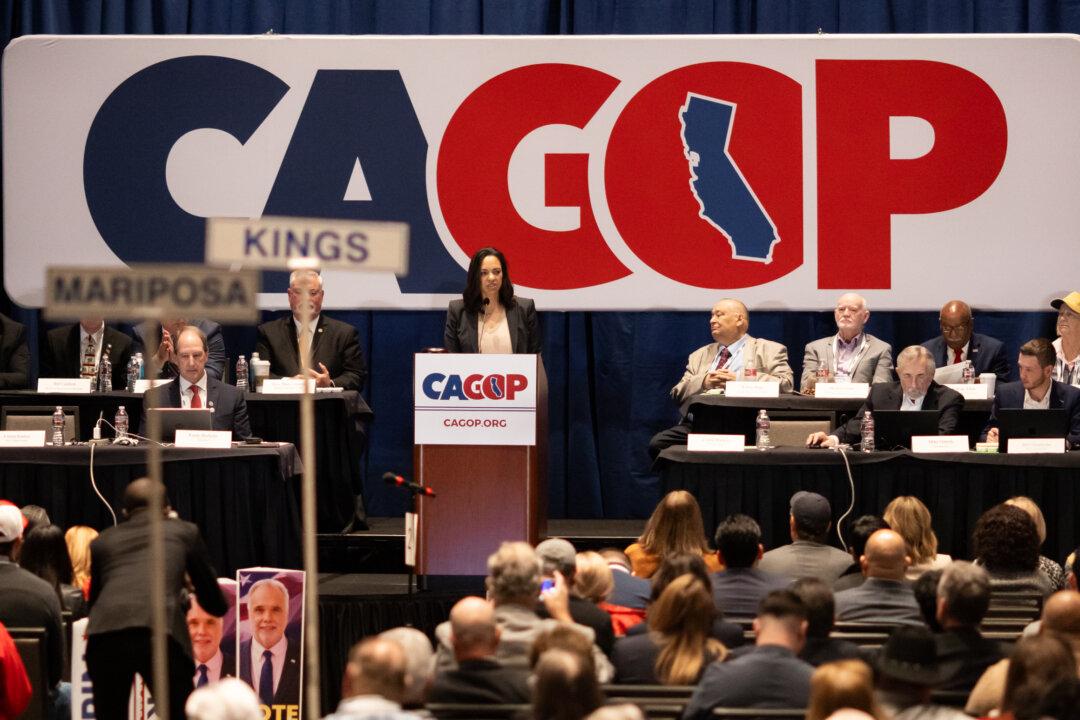As six states turn up the heat on California to cut back on water consumption from the Colorado River Basin, the state has proposed its own plan, citing a 1922 contract that grants California senior water rights.
Under the six-state proposal, Southern California water agencies would be required to reduce their water allocation by as much as 32 percent if Lake Mead—the largest water reservoir in the United States formed by the Hoover Dam on the Colorado River, straddling Nevada and Arizona—levels keep dropping.
Like California, the other states—Arizona, Colorado, Nevada, New Mexico, Utah, and Wyoming—depend on water from the Colorado River, which supports 40 million people, nearly 6 million acres of agriculture, and native tribes across seven states and portions of Mexico.

“We know that drought caused by climate change will require changes to Colorado River water use and that no state will be spared from water reductions,” the senators said in a Jan. 31 joint statement, noting that California came up with its own plan last fall to voluntarily reduce water use.
“But six other Western states dictating how much water California must give up simply isn’t a genuine consensus solution—especially coming from states that haven’t offered any new cuts to their own water usage.”
The senators also argued that the states’ proposal “further fails to recognize California’s senior legal water rights.”
Last fall, California offered to conserve 400,000 acre-feet of water each year through 2026 to protect water storage levels in Lake Mead.
“So too may the State of Arizona be required to make similar arrangements to live within its available Colorado River water supplies,” the document reads.
The proposed framework seeks to keep Lake Mead water levels at 1,000 feet and Lake Powell in Utah and Arizona, the second largest U.S. water reservoir, at 3,500 feet by modifying reservoir operations and “phased water use reduction.”

JB Hamby, chairman of the Colorado River Board of California and California’s Colorado River commissioner, supported the framework in a letter to the Bureau of Reclamation stating that it was both realistic and implementable by building on new voluntary agreements and past collaboration amongst the affected states.
According to Lisa Lien-Mager, a spokesperson for the agency, said officials have been actively managing the State Water Project—the state’s delivery system consisting of canals, pipelines, reservoirs, and hydroelectric power facilities to deliver clean water to 27 million residents—to take advantage of heavy rainfall that drenched the state in late December 2022 and early January.
“We have moved significant amounts of water into storage” and expect that several projects will capture excess flows to refill groundwater basins, she said in an email.
Discussions among the seven states are continuing with several meetings planned between now and April, according to Lien-Mager.

According to Lien-Mager, the Bureau of Reclamation expects to issue this year’s plan—called an environmental impact statement—for the states in March as a draft laying out alternatives in advance of the document being finalized by August, as is customary.
In addition to the State Water Project, the Colorado River is an important water source for urban Southern California and the sole source of supply for the Imperial Valley in California’s Riverside and Imperial counties, she said.
Water users in California who rely on the Colorado River have, since 2003, reduced usage and conserved more than 1.5 million acre-feet of water in Lake Mead over the past 15 years, according to Lien-Mager.
“California has a track record of action and will step up again because extraordinary measures are needed,” she said.





